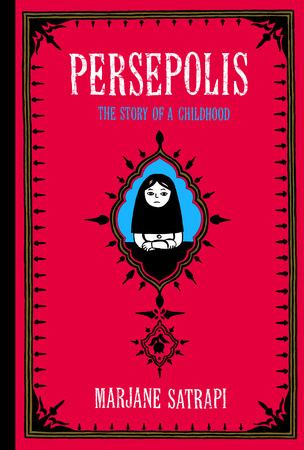 |
| Artwork courtesy of the American Library Association |
The week of September 27 - October 3 is Banned Books Week, and I'm celebrating my right to read these banned and challenged books on my blog with a mini-series of posts. Banned Books Week is one of my favorite events of
the year because I love reading and learning about everyone's
experiences with banned and challenged books.
This week, I'll be sharing a few of my favorite banned and challenged
books with my readers. I hope you enjoy this mini-series about banned and challenged books. I also hope you learn a little bit more about me, the person behind the blog, and feel comfortable enough to start talking about banned books.
Persepolis by Marjane Satrapi
 When I was in college, I had to take a number of literature courses. I was an English major, so it made sense that I ended up in so many different types of literature classes. I took a lot of classes with one particular professor, and I was so glad that she was the one that introduced me to the book for today's post.
When I was in college, I had to take a number of literature courses. I was an English major, so it made sense that I ended up in so many different types of literature classes. I took a lot of classes with one particular professor, and I was so glad that she was the one that introduced me to the book for today's post.This book that I really remember reading and cherishing just so happens to be a book that frequently tops lists of banned and challenged books. That book is Marjane Satrapi's graphic memoir, Persepolis, which tells the story of Marjane's childhood in Iran during the Islamic Revolution.
I was in awe while I read this book, so much that many of the images can still be seen in my head. I can't fathom what it was like to grow up in such a tumultuous situation, but I do know that this book was eye-opening. I will forever be grateful that I had the chance to read it.
Why the Ban?
The book is banned and challenged for a number of reasons, according to the American Library Association. Some of these reasons include "gambling, offensive language, [and] political viewpoint." Other reasons for bans and challenges include race, political incorrectness, and graphic images that depict violence and disturbing scenes.


No comments :
Post a Comment
Note: Only a member of this blog may post a comment.